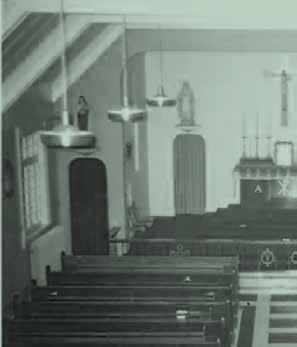
2 minute read
Building a Puzzle
BUILDING A PUZZLE Piecing Together BC Ice Age Megafauna
By Laura Termes, PhD student, Simon Fraser University By Cara Kubiak, PhD student, Simon Fraser University S tored away in the mammalogy and palaeontology collections at the
Royal BC Museum are the remnants of an ancient, diverse Vancouver Island landscape. Among them is a mammoth tooth found in the 1890s, hardened with a chocolate-brown sheen from tumbling in an island stream. An ash-coloured tusk pulled from a Victoria gravel pit in 1965 rests in Ethafoam, and an algae-stained muskox skull fragment, found last year on a nearby beach, gleams with a conservation treatment. These are just a few of the animal teeth, tusks and bones that hold clues to the mammalian landscape of the most recent Ice Age in BC. PhD students from the Simon Fraser University archaeology department are unlocking this relatively recent past by analyzing the bones and teeth of extinct animals to better understand the ecology, distribution and age of Ice Age megafauna in BC. Throughout the lifetime of an animal, biochemical signatures of the animal’s diet and the environment in which it lived are incorporated into the tissues it builds. Analysis of these tissues, such as the preserved collagen extracted from bones, can provide direct evidence of what kind of foods the animals were eating, what geographical areas those foods came from and under what climatic conditions those foods existed. Cara Kubiak is using new methods for compound specific isotope analysis for a higher-resolution look into animal diet and, and by extension, the Late Pleistocene palaeoecosystem. Radiocarbon dating specimens of the grizzly bear and the extinct short-faced bear housed at the Royal BC Museum demonstrated that these species were alive at the same time on Vancouver Island. Cara will explore the ecological implications of this overlap with compound specific isotope analysis to allow for a more detailed comparison of where these animals were in the food web and the resource specializations between the species. Laura Termes is eagerly awaiting radiocarbon dates of some 25 specimens sampled at the museum. For this batch, the focus was on mammoths, as their tremendous food and water requirements provide a gauge for British Columbia’s Ice Age ecosystem productivity. Laura hopes to engage with the ongoing discussion on Vancouver Island glacial refugia, explore how Royal BC Museum megafauna dates relate to others in the province and western North America, and dispel notions of a barren Ice Age landscape. The BC Megafauna Project is sampling collections across the province, with each sample helping to piece together the province’s Ice Age megafauna puzzle. The project has a few more places to visit and is always on the lookout for more samples. For more information and updates, visit sfu.ca/megafauna.html. Cara and Laura would like to express their thanks to curators Grant Keddie and Dr. Victoria Arbour, who have welcomed the research and shared their collection knowledge. The Royal BC Museum graciously granted access to over 50 specimens, making this collection unrivalled in the province in terms of the quantity and variety of extinct and extant animals.










